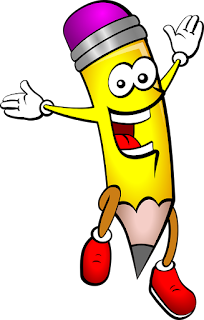The Language of Smiles
In the early 19th century, a French scientist Guillaume Duchenne de Baulogne was a neurologist who undertook the first recorded scientific study of smiles by using electrodiagnostics and electrical stimulation to distinguish between a real smile and the variety of smiles. The study was conducted by analyzing the heads of people who were executed by a guillotine and the face muscles were observed. The scientist did this observation by pulling face muscles from many different angles to catalogue and record the smiles caused by the different muscles.
According to him our smile is controlled by 2 sets of muscles: the zygomatic major muscles which run down the side of the face and connect with the corners of the mouth and the orbicularis oculi which run down the side of the face and connect with the corners of the mouth along with the orbicularis oculi which pull the eyes back. Zygomatic majors pull the mouth back and expose the teeth by enlarging the cheeks. The orbicularis oculi narrow the eyes and form 'crow's feet'. Zygomatic majors can be consciously controlled to produce false smiles of fakeness and try to appear as friendly.
Genuine smile with true feelings is seen by the orbicularis oculi which makes the eyes act independently to depict sincerity. The wrinkle lines beside the eyes demonstrate this sincerity. Insincere people smile with their mouth only. When you are really enjoying the lip corners are pulled up and the muscles around the eyes are contracted. When you are not enjoying, you just smile with your lips only. Professor Paul Ekman of the University of California and Dr. Wallace V. Friesen of the University of Kentucky invented the Facial Action Coding System (FACS) to distinguish between genuine and fake smiles.
Genuine smiles are automatic because they are generated by the unconscious brain. In situations where one feels pleasure, signals are given to the part of our brain that produces emotions, the mouth muscles move, cheeks raise, eyes crease up and eyebrows dip slightly. During fake smiles the lines around the eyes appear, cheeks bunch up and eyes contract to make it appear genuine even though it is not. In a genuine smile the fleshy part of the eye between the eyebrow and the eyelid - the eye cover fold moves downward and the end of eyebrows dip slightly.
Smiles - A smile with tight lips shows that a person is concealing a secret.
A sneer shows contempt / sarcasm.
A smile with a jaw drop shows fake laughter or joy.
A turn away smile shows femininity and vulnerability.
All one needs to is observe the person and find out the genuineness of his / her smile. Every thing that is non verbal carries a voice along with it; the trick is to observe minutely and in a cluster to know the real meaning.
According to him our smile is controlled by 2 sets of muscles: the zygomatic major muscles which run down the side of the face and connect with the corners of the mouth and the orbicularis oculi which run down the side of the face and connect with the corners of the mouth along with the orbicularis oculi which pull the eyes back. Zygomatic majors pull the mouth back and expose the teeth by enlarging the cheeks. The orbicularis oculi narrow the eyes and form 'crow's feet'. Zygomatic majors can be consciously controlled to produce false smiles of fakeness and try to appear as friendly.
Genuine smile with true feelings is seen by the orbicularis oculi which makes the eyes act independently to depict sincerity. The wrinkle lines beside the eyes demonstrate this sincerity. Insincere people smile with their mouth only. When you are really enjoying the lip corners are pulled up and the muscles around the eyes are contracted. When you are not enjoying, you just smile with your lips only. Professor Paul Ekman of the University of California and Dr. Wallace V. Friesen of the University of Kentucky invented the Facial Action Coding System (FACS) to distinguish between genuine and fake smiles.
Genuine smiles are automatic because they are generated by the unconscious brain. In situations where one feels pleasure, signals are given to the part of our brain that produces emotions, the mouth muscles move, cheeks raise, eyes crease up and eyebrows dip slightly. During fake smiles the lines around the eyes appear, cheeks bunch up and eyes contract to make it appear genuine even though it is not. In a genuine smile the fleshy part of the eye between the eyebrow and the eyelid - the eye cover fold moves downward and the end of eyebrows dip slightly.
Smiles - A smile with tight lips shows that a person is concealing a secret.
A sneer shows contempt / sarcasm.
A smile with a jaw drop shows fake laughter or joy.
A turn away smile shows femininity and vulnerability.
All one needs to is observe the person and find out the genuineness of his / her smile. Every thing that is non verbal carries a voice along with it; the trick is to observe minutely and in a cluster to know the real meaning.




keep smiling....& laughter is the best medicine
ReplyDeleteYes PK
ReplyDelete